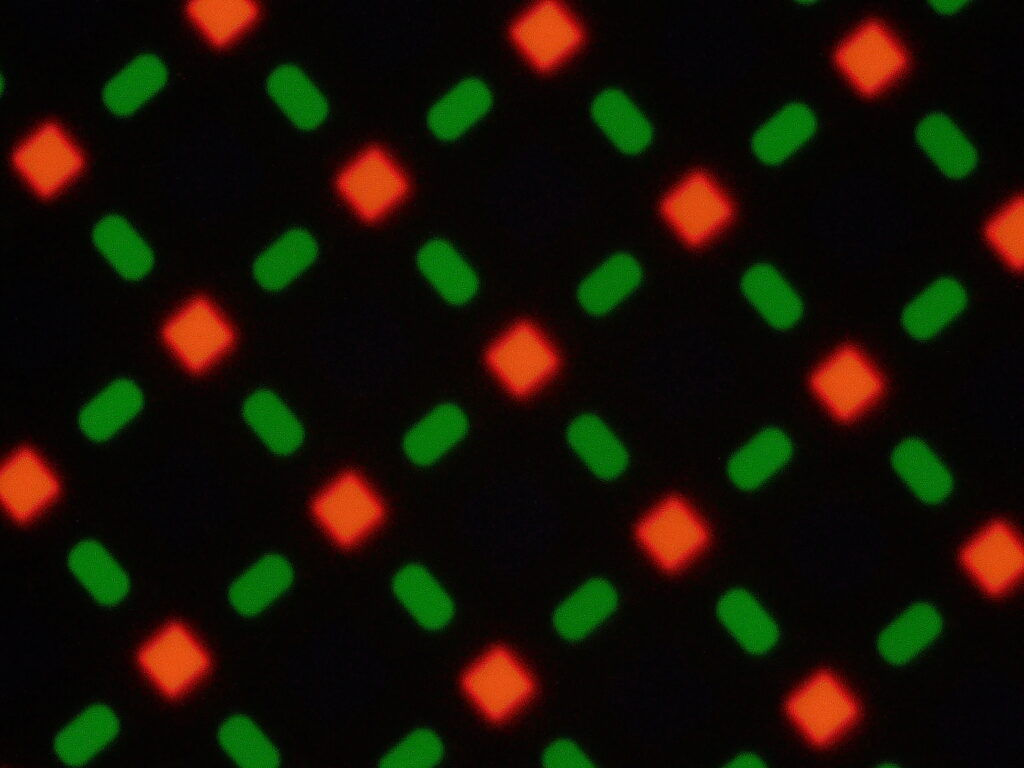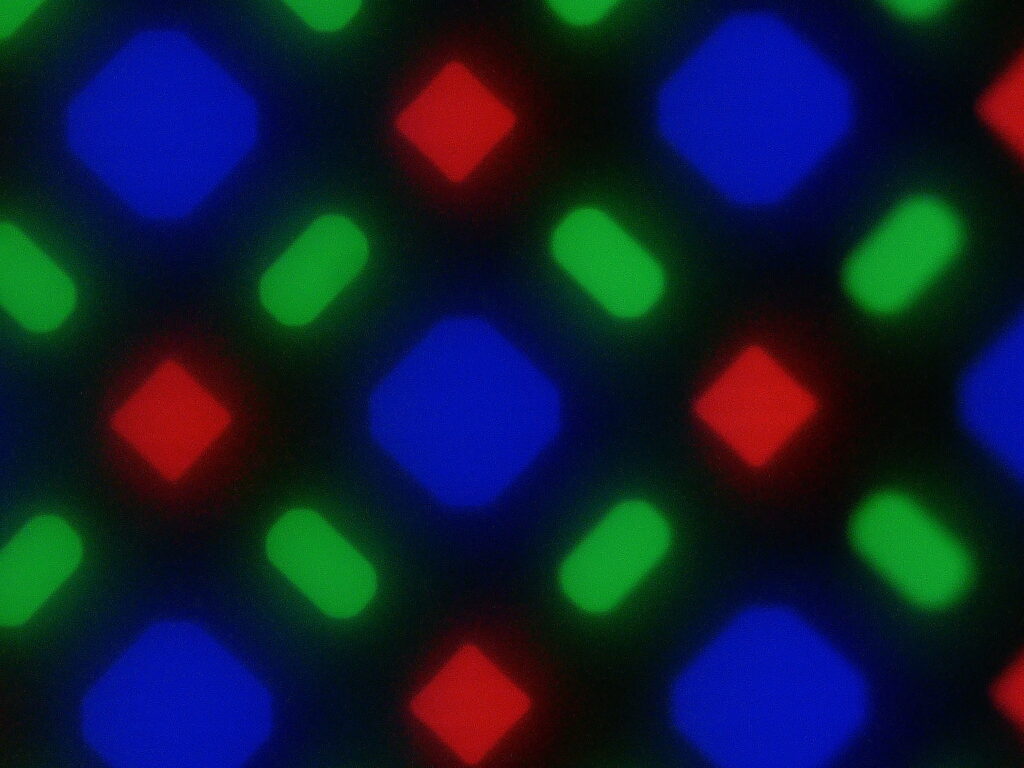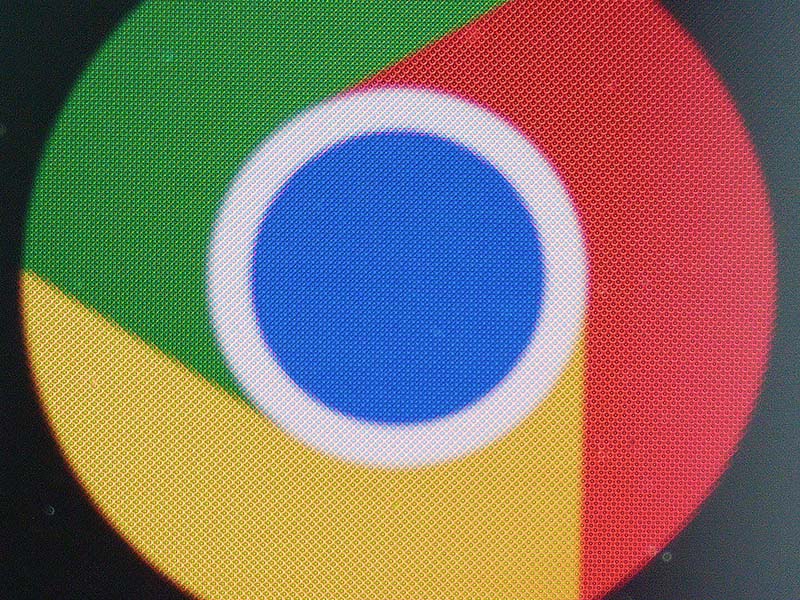The iPhone screen is something most of us look at every day without thinking twice. But under a microscope, the display transforms into a tiny world of patterns, colors, and light that reveals how the screen produces such sharp and vibrant images.
Tiny LED Lights in Perfect Patterns
If you zoom in far enough, the iPhone screen is made up of thousands—even millions—of tiny lights called pixels. Each pixel is made of even smaller parts called subpixels, which are tiny red, green, and blue (RGB) lights. These colors blend in different ways to create every color you see on the screen.

Under a microscope, these subpixels appear as a repeating pattern of red, green, and blue dots or shapes. In OLED (Organic Light-Emitting Diode) iPhone models, the arrangement of these subpixels is in a special diamond or hexagonal pattern. This design is called a PenTile matrix, and it helps make the screen look brighter and more colorful while saving battery life.
The green subpixels are often slightly larger or more frequent than the red and blue ones because the human eye is more sensitive to green light. This allows the screen to appear clearer and sharper without using more energy.
How the Lights Work Together
Each of these microscopic lights turns on and off at different brightness levels to mix colors and create the images, videos, and text you see. For example, to make the color yellow, the screen lights up both the red and green subpixels, while the blue stays off. To make white, all three colors light up at full brightness.
In OLED screens, these subpixels produce their own light, which is why OLED displays can show deep blacks—because the pixels actually turn off completely when black is needed. This is different from older LCD screens, where a backlight always shines behind the screen.

A World of Color in Every Pixel
Under a microscope, an iPhone screen is like a glowing mosaic of red, green, and blue lights, perfectly arranged in patterns. These tiny lights work together in ways we can’t see with the naked eye to create the smooth, colorful display we use every day.
Up close, the iPhone screen reveals a hidden world of color and light, built from millions of microscopic LED patterns working in perfect harmony.

